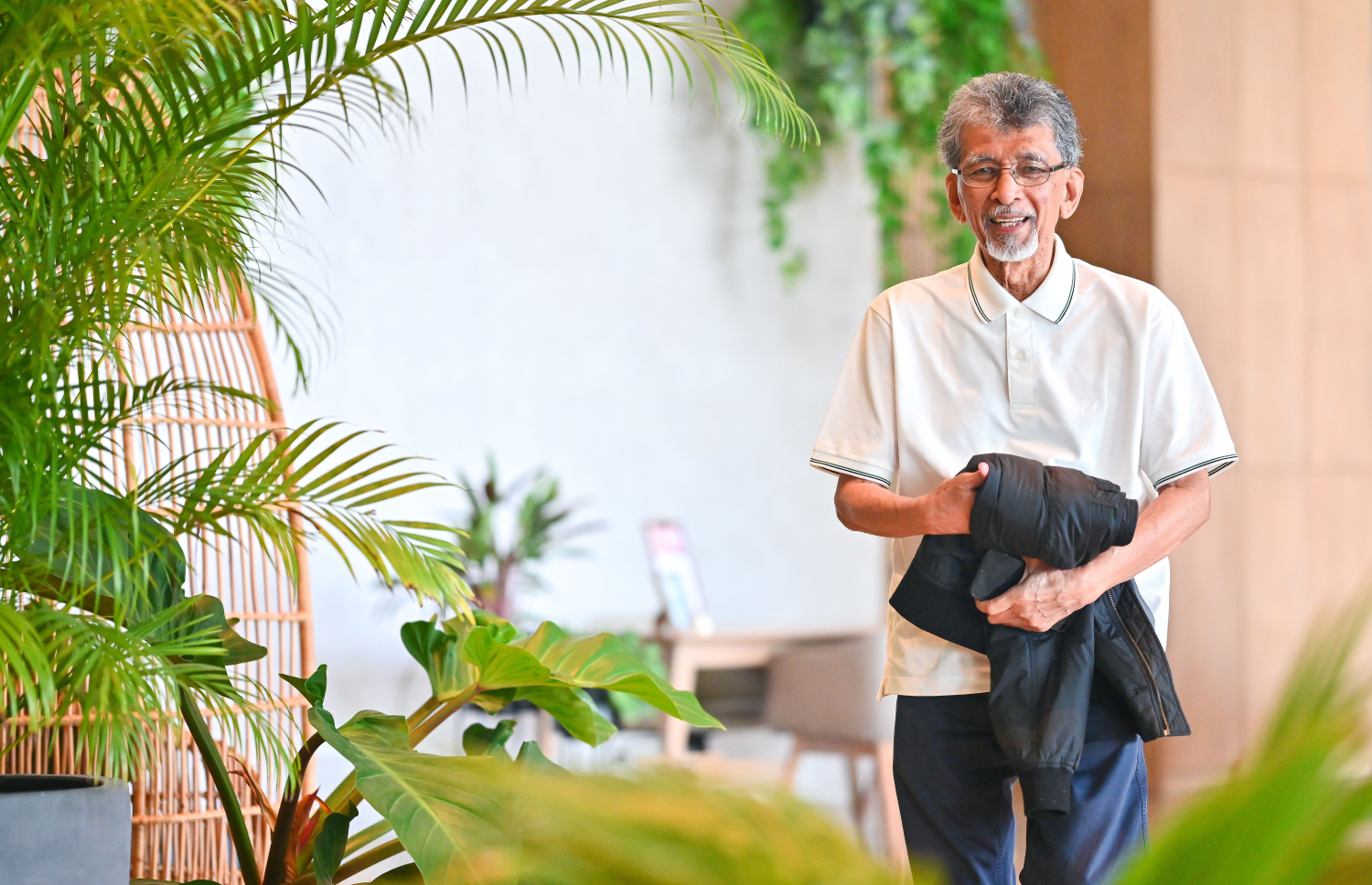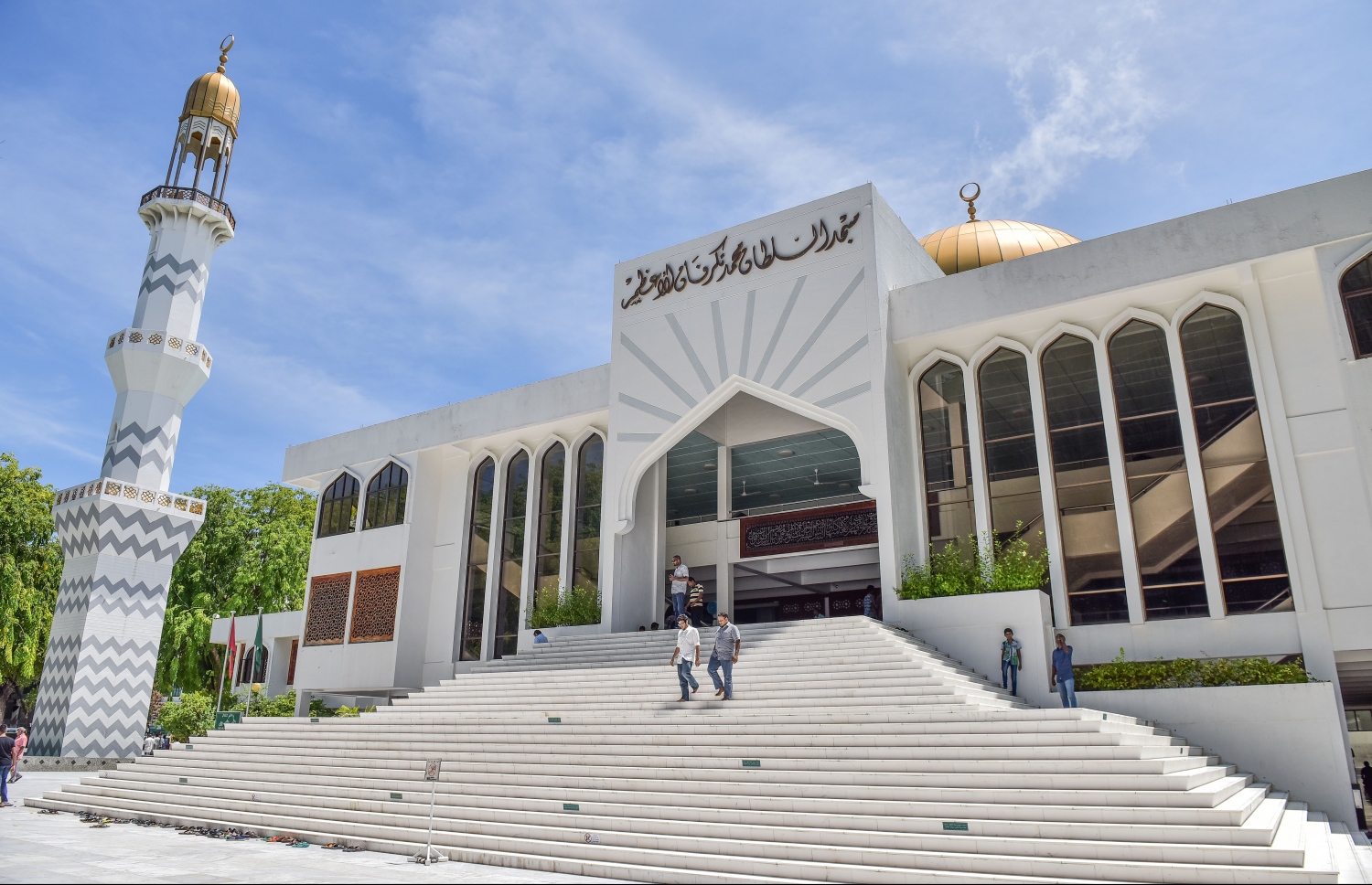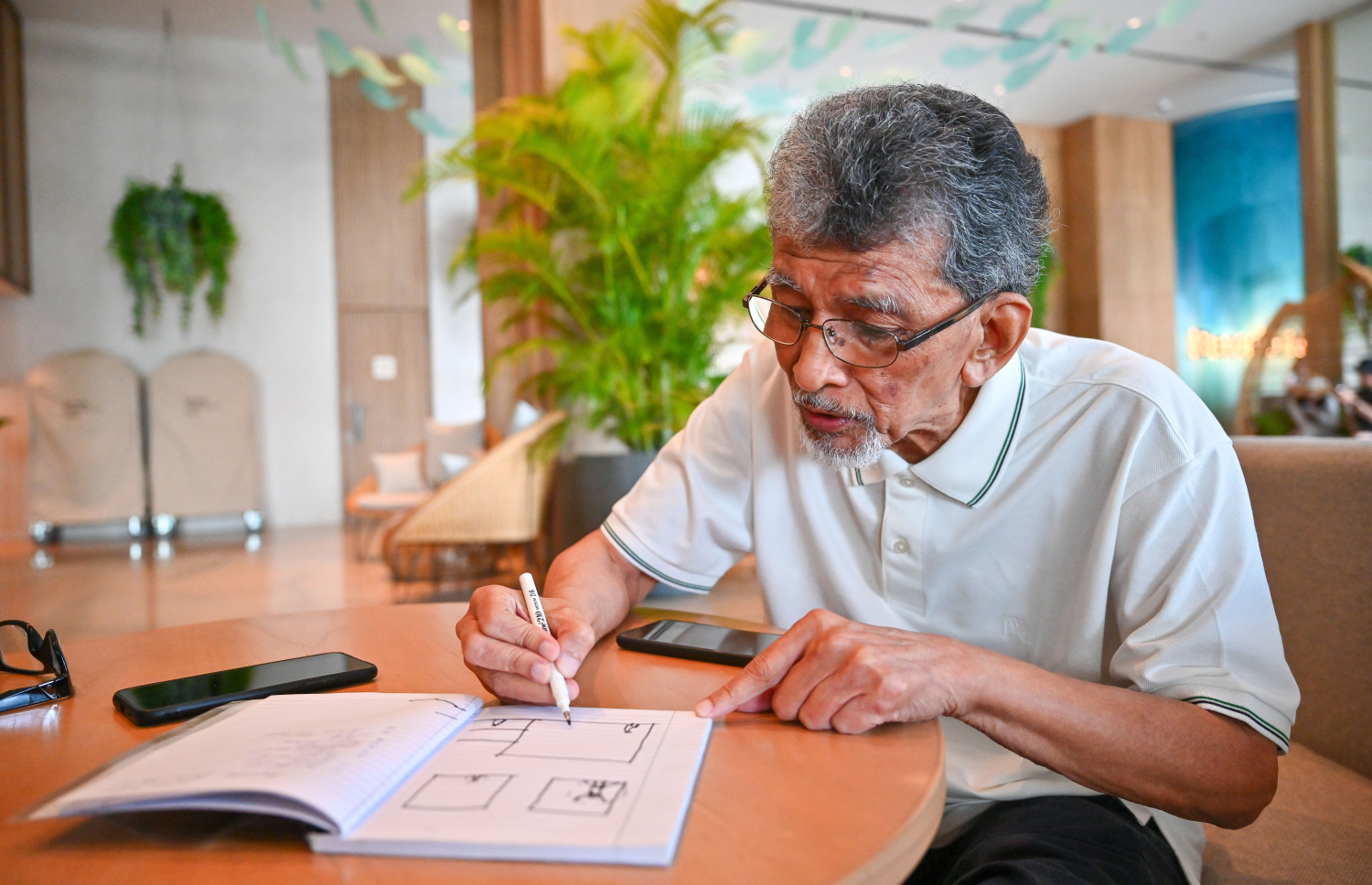Dr Dato’ Hajeedar Abdul Majid, the Malaysian architect, who designed the Islamic Centre in Male' more than 40 years ago, says he approaches every task with the same commitment.
The Islamic Centre, one of the country’s most recognizable landmarks, stands as testimony.
During his youth, Hajeedar helped transform architecture of mosques in Malaysia, pushing to make them places for learning and community life rather than solely prayer.
“It was the first radical change. Not only did we have to change the design, we had to change people’s mindset to accept it,” he said.

From drawing on walls to global recognition
Hajeedar traces his earliest memories of drawing.
“I loved to draw. I used to draw on the walls of my house, which annoyed my mother,” he recalls. She eventually suggested that he draw on paper, a shift that set him on his path.
His schoolteachers recognized his talent and entered him into an international art competition organized by the UN.
Tasked with creating a poster on the theme "World Refugees Need Help" he drew a simple image of an elderly man in a sarong, surrounded by words reflecting displacement. He won first prize.
The award was not a cash prize but something more lasting. An encyclopedia of art.
“As a young boy, I was very happy. Inside were works from Michelangelo to Gauguin and Picasso. From then on, drawing became a passion.”

The road to architecture
Though art was his hobby, as a youth he initially hoped to become a psychiatrist after witnessing the struggles of a patient discharged from a nearby hospital. But teachers later advised that the training would be too lengthy.
His second choice was accountancy, as he excelled at maths. But he quickly found the prospect “boring; the same thing every day, for the rest of your life”. A teacher then suggested architecture, recognizing his creative potential.
Hajeedar went on to study in Plymouth, England, in 1966. He has since become one of Malaysia’s most respected architects, designing 14 mosques and landmarks such as the Menara Celcom and the MNI Twin Towers.

Bangsar Mosque: blending tradition and modernity
His breakthrough came with the Masjid Sayyiduna Abu Bakr Siddiq in Bangsar, completed in 1982. It broke with tradition by integrating classrooms, a library, a multipurpose hall and even a funeral section alongside prayer space.
“I wanted mosques to be social centres,” he said.
“People liked it because I included what communities needed.”
The project gained the attention of Maldivian officials, including then minister Ilyas Ibrahim and businessman Koli Ali Maniku, who visited Malaysia in search of a model for a new mosque in Male'. After touring the Bangsar mosque, they were directed to its architect.
Designing the Islamic Centre
“They came and asked me to design the Islamic Centre, and I agreed," Hajeedar recalled.
The final plan incorporated both Malaysian and Maldivian elements.

Like Bangsar, the Islamic Centre in Male' includes a main mosque flanked by three-storey halls, with offices, a library and meeting rooms below. Local carpenters were engaged for the woodwork to incorporate traditional touches.
One striking feature is the grand staircase leading to the main prayer hall.
“You climb up to feel humility, to remind yourself of your own smallness,” Hajeedar explained.
The project was also personal. From his professional fee, he donated back to the mosque.

A legacy rooted in faith
The Islamic Centre remains one of Hajeedar’s proudest works.
“Faith is more important than country. Countries and leaders change, but faith remains,” Hajeedar said.
Now, he is working on a renovation plan for the Islamic Centre and intends to return once it is ready.